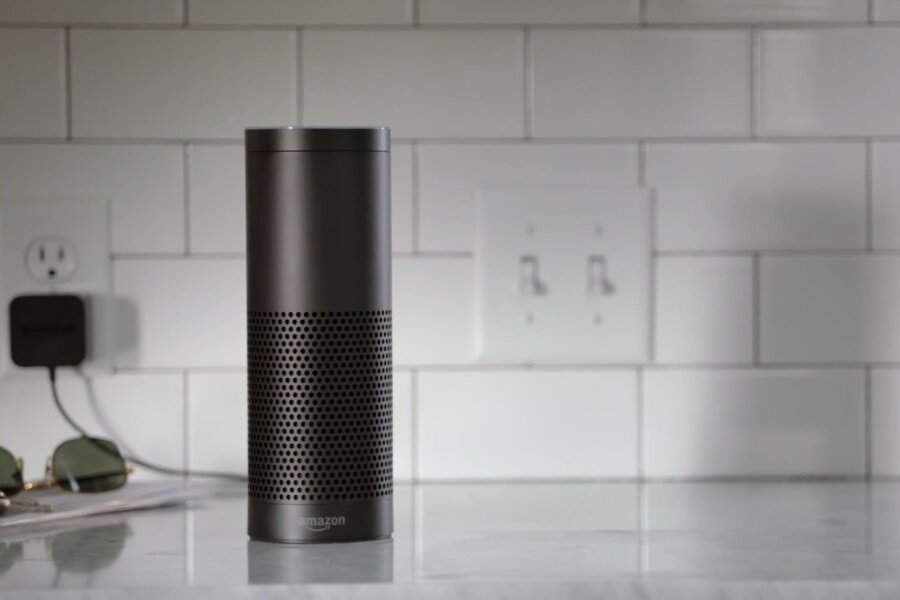Echo, Amazon's answer to Siri, is a speaker that listens to you
Loading...
A home-theater speaker that’s also a personal assistant? It seems like an unlikely combination, but that’s what Amazon is offering in the Amazon Echo, a 9-inch-tall, tube-shaped device that plays music, responds to voice commands, and (of course) allows you to add items to your Amazon shopping cart.
The Echo, which sells for $199 (or $99 for Amazon Prime members), is more or less Amazon’s response to Siri. It’s always on, but is only activated when you say a “wake word” (the promo video shows a family using the word “Alexa,” but doesn’t make it clear whether you can pick your own wake word). The Echo is connected to the Internet, so it can read news reports, look up bits of information, or stream music from Spotify or Pandora.
The Echo has seven microphones and incorporates Amazon’s far-field technology, meaning that you shouldn’t have to raise your voice to interact with it. It also has noise-filtering built in, so you can interact with the Echo even while it’s playing music. The company also says the Echo will learn your speech patterns and vocabulary over time, so it should get more helpful the longer you use it.
The promo video makes the Echo seem very pleasant: Alexa’s voice has a fairly realistic cadence, and it can respond to a wide range of queries (including playing specific music playlists and even telling jokes). It also has a 2.5-inch woofer for bass and a 2-inch tweeter for high pitches, which should make for good-quality audio.
The Echo uses the same cloud backend as other Amazon Fire devices, which is probably an indication that the company is confident in its voice-search technology and wants to put it to use in more devices. The company is releasing a companion app, as well, to allow users to interact with the Echo on their phones. There’s no standalone Echo app, however, which seems like a missed opportunity: if the cloud service works well, more people would likely be interested in using it on their phones than in having to pay nearly $200 for a separate device that must be plugged into the wall.
In any case, Amazon is taking a very careful approach to the Echo’s launch: customers must apply for an invitation to buy one, and only limited numbers of devices will be shipped out at first. This may be a way for the company to gauge customer interest and make sure that the Echo’s real-world performance measures up to its promise.






